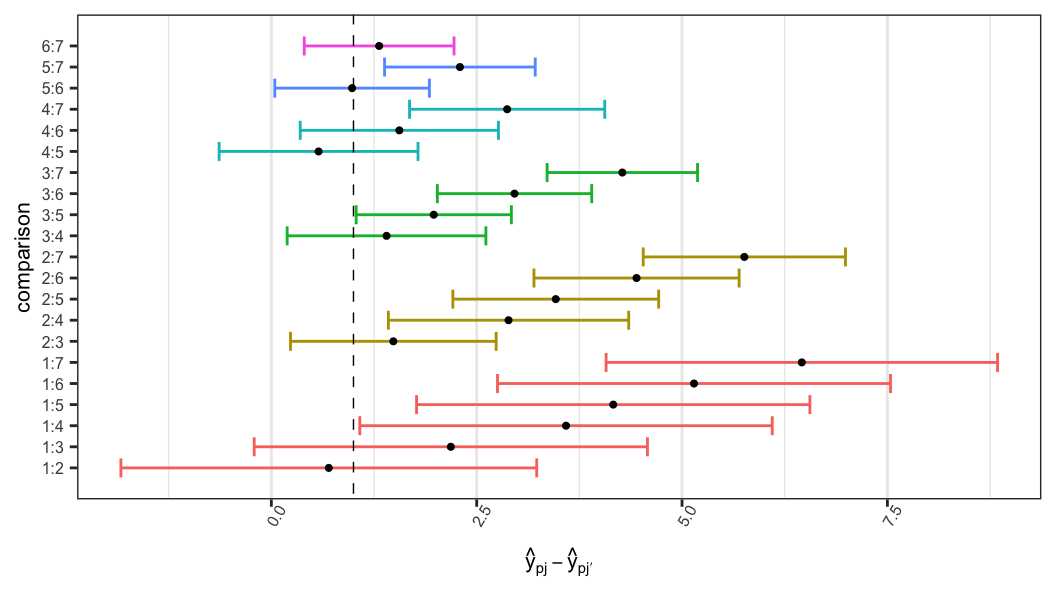dat_ex531# A tibble: 96 × 2
time status
<dbl> <int>
1 22.5 1
2 37.5 1
3 46 1
4 48.5 1
5 51.5 1
6 53 1
7 54.5 1
8 57.5 1
9 66.5 1
10 68 1
# ℹ 86 more rows(AST405) Lifetime data analysis
The pdf and survivor function of log-normal distribution
Density function of log-lifetime
Survivor function of log-lifetime
Data
Log-likelihood function
MLEs
Confidence intervals of parameters, quantiles, and survival probabilities can be obtained using the methods described for Weibull models
Estimate of survivor function (Log-normal distribution)
LRT statistics based method of obtaining CI for survivor function is described with
The
Data are available on lifetimes (in thousand miles) of 96 locomotive controls, of which were failed.
The test was terminated after
dat_ex531# A tibble: 96 × 2
time status
<dbl> <int>
1 22.5 1
2 37.5 1
3 46 1
4 48.5 1
5 51.5 1
6 53 1
7 54.5 1
8 57.5 1
9 66.5 1
10 68 1
# ℹ 86 more rowsdat_ex531 %>%
count(status)# A tibble: 2 × 2
status n
<int> <int>
1 0 59
2 1 37Log-normal and normal model fit
mod_LN <- survreg(Surv(time, status) ~ 1,
dist = "lognormal",
data = dat_ex531)mod_N <- survreg(Surv(log(time), status) ~ 1,
dist = "gaussian",
data = dat_ex531)MLEs
tidy(mod_LN)# A tibble: 2 × 5
term estimate std.error statistic p.value
<chr> <dbl> <dbl> <dbl> <dbl>
1 (Intercept) 5.19 0.129 40.3 0
2 Log(scale) -0.136 0.131 -1.04 0.297Estimated variance of
mod_LN$var (Intercept) Log(scale)
(Intercept) 0.01657557 0.00983969
Log(scale) 0.00983969 0.01703353 [,1] [,2]
[1,] 0.01657557 0.00858735
[2,] 0.00858735 0.01297359| par | lower | upper | lower | upper |
|---|---|---|---|---|
| 4.942 | 5.447 | 5.000 | 5.400 | |
| 0.676 | 1.127 | 0.709 | 1.109 |
Estimate of

`
| parameter | est | lower | upper |
|---|---|---|---|
| 0.824 | 0.667 | 0.924 |
| se | lower | upper | |||
|---|---|---|---|---|---|
| 0.25 | -0.674 | 4.606 | 0.105 | NA | NA |
| 0.50 | 0.000 | 5.195 | 0.129 | NA | NA |
| 0.75 | 0.674 | 5.783 | 0.194 | NA | NA |
Log-logistic distribution is a member of the log-location-scale family of distributions and the corresponding location-scale distribution is logistic with
Density function of log-lifetime
Survivor function of log-lifetime
Data:
Log-likelihood function
MLEs
Sampling distribution
Confidence intervals of parameters, quantiles, and survival probabilities can be obtained using the methods described for Weibull models
Estimate of survivor function (logistic distribution)
LRT statistics based method of obtaining CI for survivor function is described with
The
Data are available on lifetimes (in thousand miles) of 96 locomotive controls, of which were failed.
The test was terminated after
dat_ex531# A tibble: 96 × 2
time status
<dbl> <int>
1 22.5 1
2 37.5 1
3 46 1
4 48.5 1
5 51.5 1
6 53 1
7 54.5 1
8 57.5 1
9 66.5 1
10 68 1
# ℹ 86 more rowsdat_ex531 %>%
count(status)# A tibble: 2 × 2
status n
<int> <int>
1 0 59
2 1 37Log-logistic and logistic model fit
mod_LL <- survreg(Surv(time, status) ~ 1,
dist = "loglogistic",
data = dat_ex531)mod_L <- survreg(Surv(log(time), status) ~ 1,
dist = "logistic",
data = dat_ex531)MLEs
[1] 5.1206418 -0.8266704Estimated variance of
(Intercept) Log(scale)
(Intercept) 0.010490062 0.007837215
Log(scale) 0.007837215 0.022515937MLEs of
[1] 5.1206418 0.4375036Estimated variance of
[,1] [,2]
[1,] 0.010490062 0.003428809
[2,] 0.003428809 0.004309761| dist | par | est | lower | upper | lower | upper |
|---|---|---|---|---|---|---|
| Logistic | 5.121 | 4.920 | 5.321 | 5.000 | 5.300 | |
| NA | 0.438 | 0.326 | 0.587 | 0.360 | 0.559 | |
| Gaussian | 5.195 | 4.942 | 5.447 | 5.000 | 5.400 | |
| NA | 0.873 | 0.676 | 1.127 | 0.709 | 1.109 |
Estimate of

`
| dist | est | lower | upper |
|---|---|---|---|
| Log-logistic | 0.844 | 0.566 | 0.957 |
| Log-normal | 0.824 | 0.667 | 0.924 |
| dist | se | lower | upper | |||
|---|---|---|---|---|---|---|
| Logistic | 0.25 | -1.099 | 4.640 | 0.143 | NA | NA |
| NA | 0.50 | 0.000 | 5.121 | 0.102 | NA | NA |
| NA | 0.75 | 1.099 | 5.601 | 0.234 | NA | NA |
| Gaussian | 0.25 | -0.674 | 4.826 | 0.101 | NA | NA |
| NA | 0.50 | 0.000 | 5.121 | 0.102 | NA | NA |
| NA | 0.75 | 0.674 | 5.416 | 0.177 | NA | NA |
Let
Assume
The corresponding distribution of log-lifetime
The survivor function of
The survivor function of
When the scales are not equal (i.e.
Under the assumption of equality of the scales (i.e.
The difference between two log-lifetime quantiles can be expressed in terms of the ratio of lifetime quantiles
The ratio of the
Equality of all quantiles of two distributions, i.e.
Under the assumption of common scale (shape for lifetime) parameter, the null hypothesis of equality of two distributions can be expressed as
Equality of two populations with survivor functions (say
Since
That is, the survivor functions for
Data
Two populations can be compared in terms of
Corresponding pivotal quantity
To test
When scales are equal, two populations can be compared with respect their location parameter
The corresponding pivotal quantity
Data
Different tests and confidence intervals of interest
Confidence interval for
Equality of several location parameters when scale parameters are equal
Confident interval for
Confidence interval for
Hypothesis of interest
Log-likelihood function
Contribution to log-likelihood function for the
LRT statistic
MLEs
To obtain confidence interval of
MLEs
under
under
LRT statistic
To obtain a confidence interval of
LRT statistic
under
under
under
under
Assume
Survivor function of Weibull distribution
Survivor function of extreme value distribution
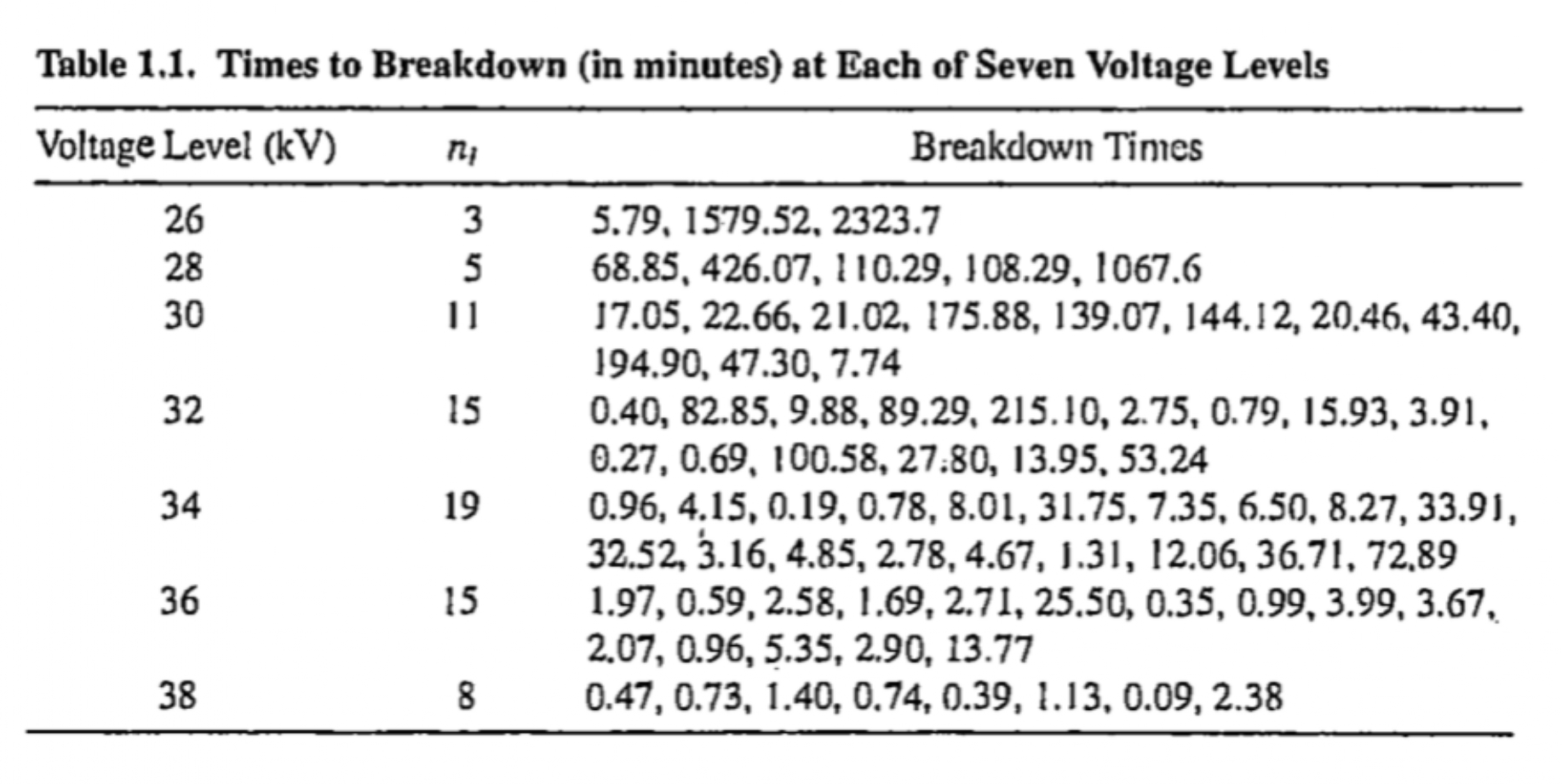
| voltage | ||
|---|---|---|
| 26 | ||
| 28 | ||
| 30 | ||
| 32 | ||
| 34 | ||
| 36 | ||
| 38 |
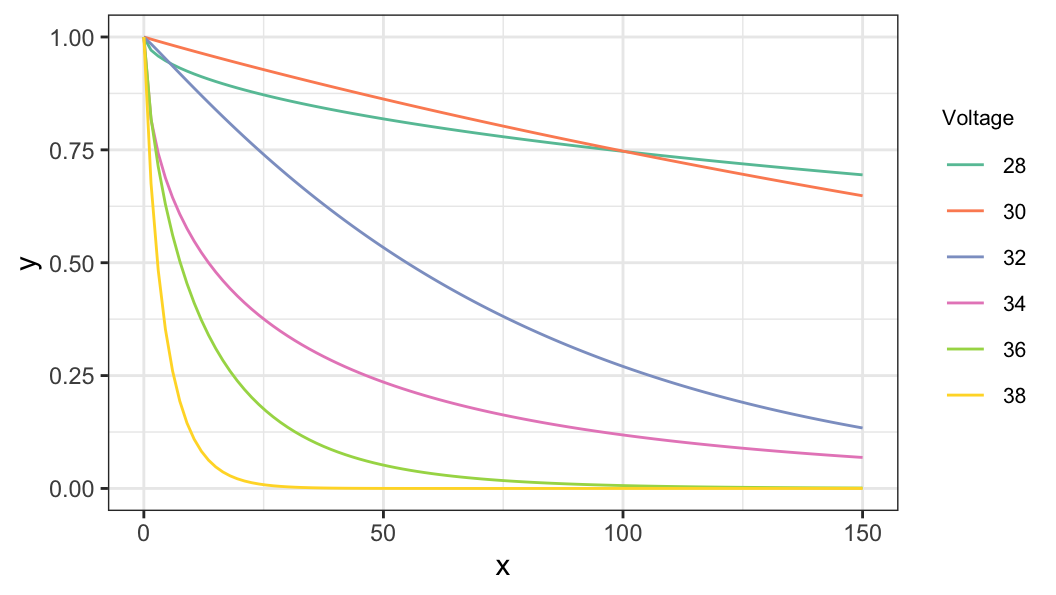
Null hypothesis
LRT statistic
Wald-type
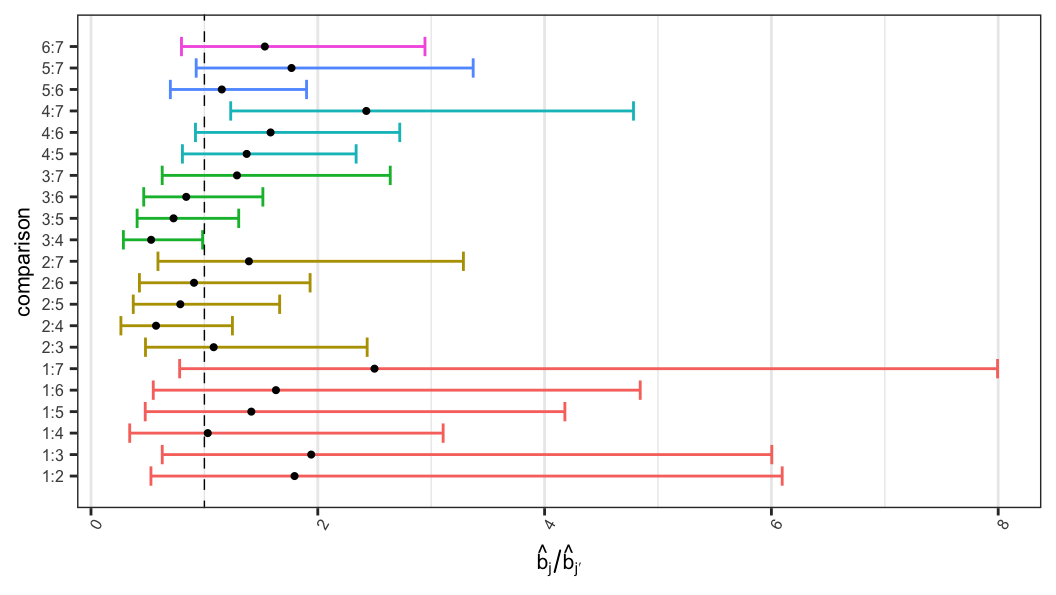
Equality of all location parameters when scales are equal
LRT statistic
Wald-type confidence interval of
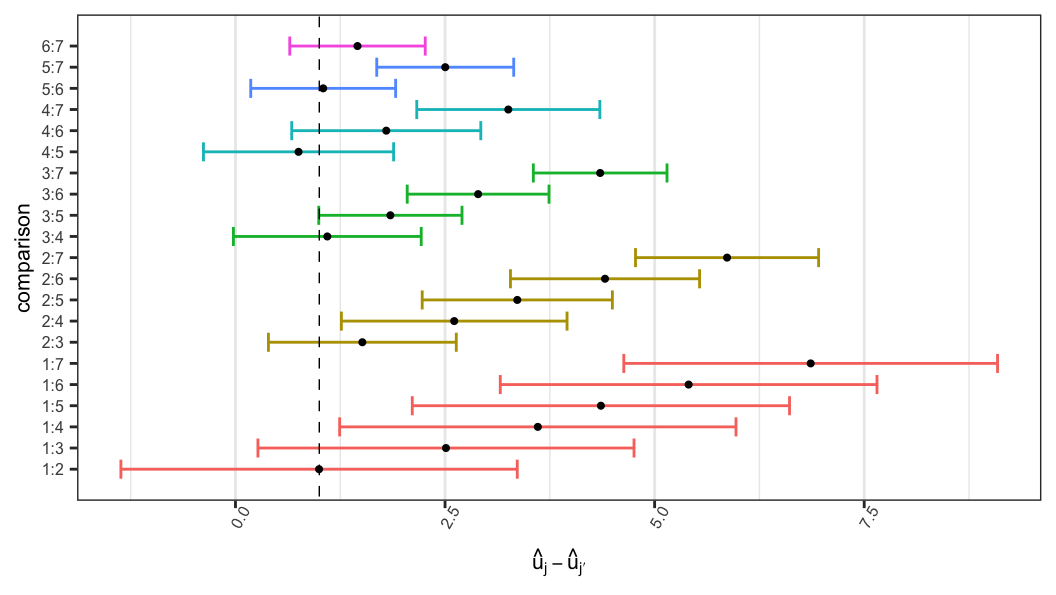
General expression of
Difference of
